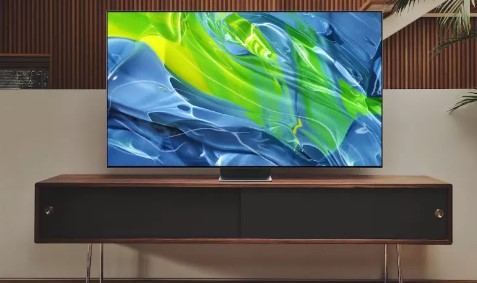Over the years, we have seen many types of screen technologies that have been Fascinating, from the LCDs and OLEDs to QLEDs and, lately, the QD-OLED. The QD-QLED technology from Samsung was first presented at the CES 2022 event. What is the purpose of the QD-OLED, though? What distinguishes it from regular” OLEDs? Will we find out in this piece?
Let you get started
What is QD-OLED, and how does it work?
Samsung Display invented the QD-OLED (Quantum Dot-OLED) technology. It, like LG Display, is a Samsung Group subsidiary. Each pixel, like the OLED you’re familiar with, emits its light, allowing for potentially unlimited contrast. We also have additional benefits, such as a broad viewing angle and a quick reaction time.
As a result, these panels may generate light without needing an external light source, which is required by LCD panels. Organic diodes, semiconductor electrical components that enable and regulate the flow of electric current in a single direction, make this feasible. Organic diodes, unlike conventional diodes, can respond to electrical stimuli by generating light. They’re thought to be self-emitting. Ohh by the way, did I mention that the “QD” in QD-OLED stands for Quantum Dot
What makes QD-OLED different from other Technologies?
LG Display’s OLED panels are W-OLED, meaning the light generated by each self-emitting cell is white. LG’s technique is based on a patent obtained from Kodak in 1987. The issue with OLED RGB technology is that the blue pixel has a limited lifetime of about 8000 hours, but the red and green pixels have a lifespan of over 100,000 hours. Kodak came up with the notion of using solely white pixels with a filter between them and the slab. Consequently, there are no more blue pixels, and as a result, there are no more early degradations.
As a result, light travels through a filter made up of the primary RGB colours to get the colours red, green and blue. Again, this is a fairly straightforward explanation. Closer actuality, zooming in on an LG OLED TV, for example, reveals a slew of subpixels that have advanced significantly in recent years. However, this did not address the technology’s major flaw: when light from a white pixel goes through an RGB filter, it loses 30 to 40% of its brightness.
W-OLED panels have an issue due to this design: they can’t display bright and colour-saturated components simultaneously since they only receive pure white light.
The QD-OLED solves this problem: since there is no white subpixel to erase the colour, even the brightest pixel of the panel may be shown with the proper colour saturation. In the realm of OLEDs, this is a true revolution. We now have an actual RGB panel in which each pixel is made up entirely of red, green, and blue subpixels, resulting in increased chromatic richness and brightness.
Instead of standard RGB colour filters, the revolutionary QD-OLED panel structure is based on quantum dots. These molecules are activated by light, allowing them to produce diverse hues, notably the three primary colours.
Due to quantum dots, the colour space coverage is potentially better. In addition to the colour saturation in the image’s lighter portions, the colour spectrum particular to the slab will enable colourimetry to be exhibited with the deepest primary colours, allowing for a considerably broader colour spectrum coverage.
As a result, the QD-OLED offers a better colour dispersion, enhancing the excellent viewing angle of previous OLED models while avoiding tint issues when seen at an angle. Because the dynamic range’s lightweight components are brighter, the colors are considerably more prosperous and saturated without seeming fake, and the HDR effect is substantially more substantial.
QD-OLED VS OLED
Screen burns are often cited as a reason for OLED resistance; this is a long-standing issue with organic light-emitting diode (OLED) displays. It has existed for as long as displays have existed and even affected old-fashioned CRT computer screens. However, the brighter the OLEDs are and the longer they are on, the quicker their light intensity fades. A burn-in is OLED pixels that can no longer shine with the same clarity as the pixels around them.
It’s important to note that no technology currently exists that meets all of the requirements for the ideal television. Anyway, let’s return to our QD-OLED. Is it affected by Screen burns? This new screen technology does not intend to solve the issue of Screen burns, particularly as we do not yet have good hindsight.
Samsung has yet to demonstrate the capabilities of its QD-OLED screens. Even though this technology is based on well-known inventions such as quantum dots and OLED, it is still a relatively new screen technology. It will be required to determine if the QD-OLED suffers from early blue pixel deterioration and whether its static picture retention resilience is the same, better, or worse than traditional OLED panels.



